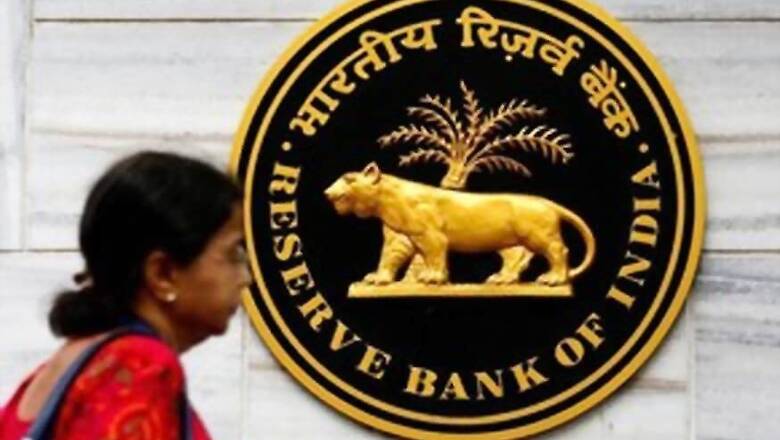
views
Why is there a tiger on the Reserve Bank of India’s emblem? To remind and symbolise not just its governmental status, its links to the country - but also its independence and a critical separation of the RBI from the government.
The origins of the RBI can be traced back to 1926, when the Royal Commission on Indian Currency and Finance—also known as the Hilton-Young Commission— recommended the creation of a central bank.
These were in accordance with an exposition presented by BR Ambedkar to the commission, based on his book, ‘The Problem of the Rupee – Its Origin and Its Solution’.
The bank was created to separate the control of currency and credit from the government and augment banking facilities throughout the country. The RBI Act of 1934 established it as the banker for the central government.
The official emblem of the apex bank – a palm tree and a tiger – is in many ways a vestige of this colonial past and is derived from the East India Company’s original seal and mohur that showed a lion and a palm tree. The new emblem had to symbolise this: the fact that the Reserve Bank of India was governmental, but at the same time a separate entity with a specific task.
The consideration, according to the RBI, in selecting the logo was, that “the seal should emphasise the Governmental status of the Bank, but not too closely” and that “it should have something Indian in the design”.
The tiger, it was decided, would replace the lion. Tigers, at the time, were widespread in India and carried a cultural cache like no other species. The lion, on the other hand, was on the East India Company’s crest and hunting by British colonial officers and Indian rulers had left the country with an isolated population of a few dozen in Junagadh.
An official explained, “The tiger was chosen since it was felt to be more an ‘Indian’ animal than the lion. At the time, the tiger was widespread through the country, while the lion was virtually extinct. The British were also enthralled by the tiger, even though it didn’t feature very prominently in the Indian imagination.”
The official added, "The bank didn't immediately become the kind of institution that BR Ambedkar has envisioned. But the vision was clear, that it would be independent while working closely with the government and together they would work towards the betterment of the people of India."
The RBI had entrusted the work to a firm in Madras to meet the requirements in connection with the stamping of the Bank’s share certificates.
However, in a meeting on February 23, 1935, the board approved the design but desired improvements in the tiger’s appearance – however they were told that this wasn’t possible. James Braid Taylor, the deputy controllers in the currency department of the Government of India, who would become the last British Governor of the RBI in 1937, wasn’t pleased.
He ensured that fresh sketches were prepared by the Government of India Mint and the Security Printing Press, going so far as to get a photograph clicked of a statue of the tiger on the entrance gate at Belvedere, Calcutta.
The final result though, was not to his liking. The tree, he said was “all right”, adding, “But his tiger looks too like some species of dog, and I am afraid that a design of a dog and a tree would arouse derision among the irreverent... the tiger is distinctly good but the tree has spoiled it.”
He argued that a “firm line” under the tiger’s feet would have helped and said, “The stem is too long and the branches too spidery, but I should have thought that by putting a firm line under the feet of his tiger and making his tree stronger and lower we could get quite a good result from his design.”
Taylor was disappointed. It was too late to change the design of the emblem and it remains, till date. Much of his derision with the tiger had to do with the space the tiger occupied in the imperial imagination - which wasn’t the case in preceding centuries.
Kailash Sankhala, the first director of India’s tiger-preservation project wrote, “After about 1500 BC, the tiger seems to have lost its supremacy in India for a long time. The lion takes over… Only in 1972 was the tiger declared India’s national animal, at last replacing the lion that has ruled so meaningless for more than 2,000 years.”


















Comments
0 comment